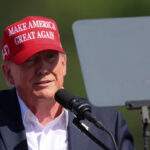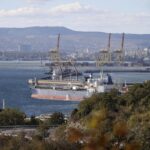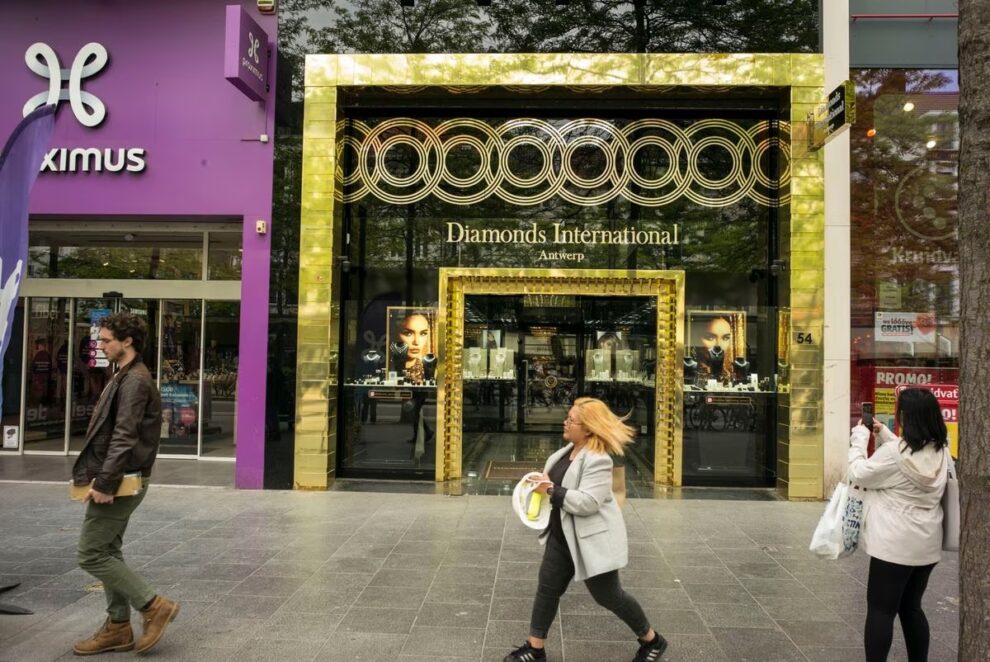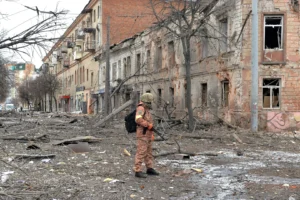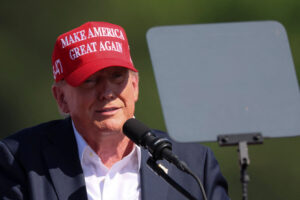The Belgian city has been the world leader of the trade for more than 500 years, but it is concerned that restrictions may push the business towards other hubs, if they are not issued by all G-7 countries
Being the head of the world diamond trade for more than five centuries provides many lessons on how to survive wars, political conflicts and crises of all kinds. Even so, the Belgian city of Antwerp — the main hub for buying and selling the coveted precious stones in Europe and the world — is on tenterhooks these days. The possibility that international sanctions will be levied against Russia’s diamonds over the war in Ukraine is once again being discussed by world leaders. “Russian diamonds are not forever,” Charles Michel, the president of the European Council — and former Belgian prime minister — said at the G-7 summit in Hiroshima last week.
“We are waiting to see what happens,” say sources from the diamond sector of the Flemish city. For more than a decade, most Antwerp merchants have been sending diamonds to be cut in Dubai and Bombay, where it is cheaper, since taxes aren’t as high as in Europe. Even so, the Belgian port city remains the world’s biggest hub for precious stones: around 85% of the globe’s rough diamonds pass through Antwerp, while 50% of cut diamonds and 40% of synthetic gems move through the port.
The G-7 meeting in Hiroshima last week ended with an explicit mention of Russian diamonds, which bring in some €4 billion to Moscow each year. But no deadline was set to issue sanctions. Despite this, experts believe sanctions will come sooner rather than later. The United States banned Russian diamonds in 2022. And the United Kingdom has just announced that it will follow suit. Until now, the European Union has not targeted Russian diamonds, especially due to the threat of a Belgian veto. But the Belgian government of Alexander De Croo recently opened up to the possibility of doing so, as long as the sanctions issued across all G 7 countries, where 80% of the diamonds are sold. Michel also said he wants to ensure that a “scientific” system to trace the stones from their origin is in place, so that there are no “legal loopholes.”
As industry experts explain, the issue is that Russian diamonds are first sent to Indian, and from there, enter the U.S. market. This legal loophole is of big concern to Belgium. “For the U.S., when a diamond suffers a ‘substantial transformation,’ it is no longer a Russian diamond. So from the moment a [Russian] diamond is polished in India, under U.S. law, it is no longer Russian,” experts explain. And diamonds are not like Russian oil or gas, which require complex infrastructure to circumvent sanctions. With precious stones, it is much easier to skirt the restrictions. The experts explain: “You put a few diamonds in your pocket, and you get on a plane to India,” where the trace of the real origin of the stone is lost.
The goal of the sanctions is to punish Moscow for its war in Ukraine, but if the diamonds end up on the market anyway, “the effect is totally null in Russia, so the sanctions would have no effect,” say Belgian diplomatic sources.
“Last year, many Americans unknowingly bought Russian diamonds, thinking they were Indian, but the reality is they are Russian. We estimate that all diamonds under one carat sold in the U.S. last year were Russian,” say sources in the Belgian diamond sector, speaking on condition of anonymity due to the concern sparked by possible sanctions on Russian diamonds.
Since the war in Ukraine began, the name of Alrosa, a Russian state-owned company that is the world’s leading diamond producer, has been repeatedly left out of the EU’s blacklist. But at the G-7 meeting in Japan, the taboo on sanctioning Russia’s precious stones was definitively broken, prompting concern from Antwerp. Europe’s city of diamonds is concerned that if the measures are not applied correctly, they could destroy its flourishing gemstone business.
The diamond district is just around the corner from Antwerp’s spectacular central train station. Jewelry stores fill the surrounding streets. Almost every business, hotel, parking lot or restaurant, has a diamond in its name or logo. But as soon as you cross the security barrier that leads to the heart of the diamond district, there are no more flashy shop window displays. The street — or rather the alley — that has been the epicenter of the diamond trade in Europe and the world for more than 500 years is a short lane closed to traffic surrounded by ugly office buildings. Traders from all different countries, as well as many ultra-Orthodox Jews — who have working in the industry in Belgium for generations — are seen coming in and out of the buildings.
The heart of Antwerp’s diamond district knows how to hide its treasures well. It has been trying to stop the flow of Russian diamonds into the city for some time. The numbers have been falling steadily since the beginning of the war in Ukraine: last year, the Russian gemstone trade fell by at least 65%. Antwerp points to this figure when the EU is criticized for not sanctioning Alrosa.
What worries Antwerp is not so much that Russian diamonds will be banned, but that they will only be banned at a European level, meaning there will be legal loopholes to circumvent sanctions. The sector says that in this scenario, Antwerp — which is already curbing the trade of Russian gems — will lose out. The industry — which is still recovering from the fallout of the Covid-19 pandemic — is concerned that a large part of its business will move to other, less scrupulous countries.
“The industry needs a level playing field. There is international recognition that Antwerp is the only diamond business center subject to EU regulations against money laundering or terrorist financing,” indicate sources in the sector. If the sanctions do not guarantee that the Russian diamond business is stopped everywhere, “companies that are doing the right thing in the industry would be punished and those that move to other business centers to avoid these norms, which are in countries that what’s more support the Putin regime, would be rewarded,” they warn. “It would be very strange if the result of the sanctions was to reward history’s bad guys.”
To prevent this, the Belgian government and diamond industry are calling for the sanctions to be applied by all G-7 countries, and for a traceability system that is more “scientific” than the written declarations that are currently used, as experts warn these can be easily falsified.
The sector is pinning its hopes on a Swiss company called Spacecode, which claims to have designed a device that can identify where a diamond has come from. “The entire diamond supply chain is very interested [in the device], they recognize the positive contribution it will make to the industry. We have been contacted by mines, producers, laboratories, producers, banks and retailers,” Spacecode CEO Pavlo Protopapa told EL PAÍS by email.
The company hopes that the first devices small enough to be easily distributed will be available between the end of the year and March 31, 2024. But only throughout next year, will they be able to be produced on the scale required for them to be a requirement to impose sanctions. For those who want to punish Moscow’s profitable and highly symbolic diamond sector, this timeline is far too slow.
Source : EL PAIS



